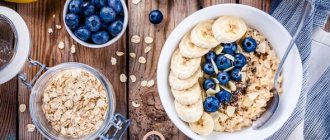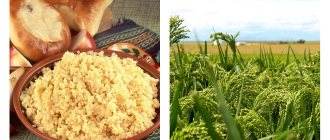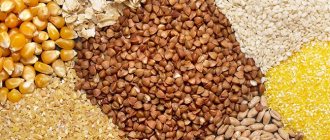Dried fruits for diabetes are a favorite dessert of many people. It is useful to include raisins in your daily menu for diabetes. Most people are interested in whether it is possible to eat dried apricots when diagnosed with diabetes? Dried apricots can have a diametrically opposite effect in type 2 diabetes.
Dried apricots can not only be beneficial for diabetics, but can also be harmful . Doctors still cannot definitively decide whether it is possible to eat dried apricots if you have diabetes. Experts' opinions were divided. Some of them believe that this product is a fairly high-calorie fruit. It contains natural sugars, which are undesirable for this disease. Another part of doctors claims that the concepts of dried apricots and diabetes are compatible. This opinion is explained by the fact that dried fruits contain many useful substances.
When consuming dried apricots for diabetes, it is worth taking into account the very large percentage of sugars (up to 85%) in it, but the glycemic index of the product is small, so whether or not you can consume this sweetness can only be determined by a doctor, depending on the severity of the pathological process.
Dried apricots for diabetes: composition
Dried apricots are approved for use in diabetes; they are considered healthy products because they contain:
- vitamins B, E, rutin, ascorbic acid, rutin, carotene, biotin;
- minerals: potassium, magnesium, iron, cobalt, calcium;
- organic acids: malic, citric;
- bioflavonoids (antioxidants);
- polysaccharide inulin, soluble and insoluble plant fibers;
- amino acids.
A feature of dried apricots is the complete preservation of vitamins and minerals, since when dried, their concentration even increases. Compared to fresh apricots, it contains more protein, as well as beta-carotene (provitamin A), which is important for vision and the condition of blood vessels.
Benefits and harms
The beneficial properties of dried apricots include:
- improvement of heart function, normalization of rhythm;
- removing excess cholesterol, salt and water from the body;
- maintaining normal blood pressure levels;
- decreased blood viscosity and increased hemoglobin levels;
- relieving arterial spasm;
- activation of insulin production by the pancreas;
- gives a feeling of fullness with a small amount;
- normalizes digestion and intestinal activity.
The harmful properties of dried apricots include the ability to enhance intestinal peristalsis (contractions); in case of increased sensitivity, it causes diarrhea and allergic reactions.
Beneficial features
Everyone knows that dried apricots are pitted apricots, divided into halves and dried naturally (in an industrial environment using special technology). But not many people know what qualities this product has and what its pulp includes.
So, dried apricots contain the following substances vital for the body:
- vitamins: A, C, H, E, P, PP, group B (1, 2, 9);
- trace elements: magnesium, iodine, cobalt, iron, copper, potassium, phosphorus, sodium, manganese;
- organic acids: malic, nicotinic, tartaric, citric, salicylic;
- tannins, starch, sugar;
- inulin, pectin, dextrin, carotene.
Considering this list of useful microelements, dried apricots are rightfully popularly called “fruits of health.” Moreover, even doctors recommend taking apricots for medicinal purposes in this form, since all the beneficial substances not only do not disappear when dried, but also increase their concentration by 5 times.
The elements that make up dried apricots prevent the occurrence of many unpleasant diagnoses, help to significantly slow down the process and even completely eradicate many diseases.
Thus, potassium makes an invaluable contribution to the normalization of myocardial function, stabilization of heart rhythm, is an excellent anti-sclerotic agent, reduces pressure in blood vessels and removes toxic substances.
Another essential microelement in dried apricots, magnesium, prevents damage to the vascular system, maintains health and prolongs the youth of the heart muscle, and is also involved in the synthesis of insulin.
Dried apricots contain a great variety of vitamins and minerals that support normal vision and protect the eyes from the negative effects of the human environment and its internal pathological processes.
The vitamin-mineral cocktail contained in dried apricots forces the immune system to work actively and protect the body from various kinds of infectious diseases. This is especially important for people living with diabetes.
Could it be like a medicine?
Dried apricots help saturate the diabetic's body with valuable minerals and vitamins, soluble plant fibers. It, like any other healthy food product, is suitable for the prevention of a number of diseases, but consumption already during illness will not give a pronounced effect. Using dried apricots you can:
- strengthen the immune system;
- cleanse the body of toxic metabolic products;
- improve kidney and liver function;
- restore intestinal function after a course of antibiotic therapy (thanks to inulin and pectin);
- slow down vision deterioration;
- replenish potassium losses when using diuretics;
- help increase hemoglobin in anemia.
Contraindications
Of course, there are cases of health conditions or individual characteristics of a person when dried apricots should not be consumed at all.
Such contraindications include:
- acute/chronic problems with the gastrointestinal tract (the product contains such an amount of fiber that can lead to an even greater negative effect on digestion and intestinal dysfunction);
- low blood pressure (can cause hypotension, which in combination with high sugar can lead to irreparable consequences);
- tendency to allergic reactions (individual intolerance to apricots or other negative reactions of the body);
- severe wear and tear of blood vessels (this point is quite controversial, but in practice it occurs, so if you have problems with the vascular system, it would be better to consult with an experienced doctor).
Glycemic index of dried apricots
Despite the high level of carbohydrates, the glycemic index of dried apricots is 30-39 units (depending on the type of processing and apricot variety). Therefore, this product is not prohibited for diabetics; when consuming this dried fruit, sugar does not rise quickly.
It is also necessary for obese patients to limit the amount of dried apricots, since the calorie content of 100 g is 230-250 kcal per 100 g.
Rules of use
Even for healthy people, consuming this dried fruit in large quantities is fraught with disorders of the functioning of various organs and unpleasant conditions.
As for patients with diagnosable diabetes of any type, the addition of dried apricots to their diet should be limited to 1-2 slices. Increasing this dose can lead to a sharp jump in glucose and all the resulting negative consequences.
Oatmeal with dried apricots
For any type of “sugar disease”, it is advisable to take dried apricots not as a separate dose, but by adding it to various dishes - yoghurt, porridge or meat.
For example, a very popular method is to brew oatmeal with dried apricots in boiling water to prepare a nutritious and tasty treat for breakfast. It is also very good in combination with fish, rice or as part of bread.
For people with a “sugar diagnosis” in their medical records, it is very important to eat only healthy foods, so it is better for them to give preference to naturally dried apricots.
To select dried apricots that have not been treated with sulfur (as is done in commercial production), it is best to avoid fruits with a beautiful glossy appearance and bright orange color.
Natural dried apricots are rather inconspicuous, matte brownish-red in color.
In any case, no matter how this product is produced, before eating dried fruit, it must be thoroughly washed, scalded with boiling water and soaked in it for 15-20 minutes.
Is it possible to have dried apricots for type 1 diabetes?
With the first type of diabetes, you can eat dried apricots, but taking into account bread units - one XE is contained in 25 g, which is approximately 5-7 pieces. It is not recommended to use dried fruits as an independent meal. The best combinations are dried apricots with cottage cheese, kefir or raw grated carrots.
In the permitted quantity, dried apricot is used instead of sweets. To increase the nutritional value, half a walnut is placed inside the steamed dried apricots.
When is it better to give up?
Sometimes it is better to avoid dried fruits altogether. For example, dried apricots should not be eaten if:
- digestive disorders,
- allergic reactions,
- hypertension,
- and bronchial asthma.
Prunes and dried apricots are not recommended to be included in the diet of a diabetic who is obese.
It is better not to include prunes in the menu if, in addition to diabetes, you have:
- kidney stone disease,
- individual intolerance, accompanied by allergic reactions.
- gout, since prunes have minor diuretic properties,
- hypertension.
Dried apricots for type 2 diabetes mellitus: rules of use
For type 2 diabetes mellitus, you can eat 3-5 pieces of dried apricots per day, preferably not at once. For proper use, you must first rinse the dried fruits well under running water, this is especially important when buying store-bought dried fruits. After this, they are poured with a small amount of boiling water and left for 30 minutes.
For diabetics with type 2 disease, it is best to combine dried apricots with kefir and bran.
How much can you eat per day during gestational age?
If only diet is used to treat gestational diabetes, then 3-5 pieces of dried apricots are allowed per day, and when using insulin, you can increase the amount to 5-7, but divide them into 2-3 times. For pregnant women, apricots (apricot fruits with pits) are healthier than dried apricots.
Prunes and dried apricots on the menu
There are a great many recipes that include dried fruits. They give the dish a refined taste and sweetness. They are used as additives in salads, side dishes and meat. The inclusion of prunes and dried apricots in dough or filling for confectionery and bakery products reduces the ratio of fats and cholesterol.
Salad with prunes
Prunes are very popular for diabetes. Those who suffer from illness especially love the salad with this dried fruit.
Ingredients:
- boiled chicken fillet,
- boiled egg,
- 2 fresh cucumbers,
- 1–2 prunes,
- 1 tsp. mustard and low-fat yogurt.
Cooking process:
- Finely chop the ingredients and layer them. First the chicken, then the cucumbers and the egg.
- Spread each layer with a mixture of mustard and yogurt.
- Sprinkle chopped prunes on top.
- Place the prepared salad in the refrigerator for 1–2 hours, allowing it to soak.
Eat small meals 1-2 times a day.
Prune jam
Prune jam is no less tasty and healthy.
Ingredients:
- 0.5 kg dried fruits,
- lemon juice,
- sugar substitute,
- cinnamon,
- vanilla essence.
Cooking process:
- Chop the dried fruits and place in a saucepan.
- Add squeezed lemon juice and cook until smooth.
- After this, add sugar substitute and keep on fire for another 5-10 minutes.
- At the end of cooking, add cinnamon or vanilla essence.
- Cool the finished jam at room temperature and transfer to a jar.
Store in the refrigerator. It is advisable to consume the dish in small quantities no more than once a day.
Curd zrazy with dried apricots
For type 1 and type 2 diabetes, you can diversify your diet with curd and dried apricots.
Ingredients:
- 0.5 kg cottage cheese,
- 1 egg
- 100 g flour,
- 34 g vegetable oil,
- 100 g dried apricots.
Cooking process:
- Prepare the curd dough. Grind the cottage cheese in a meat grinder or grate it on a coarse grater. Add egg, flour and vanilla or cinnamon (optional). Knead the dough, then roll it into a rope.
- Divide the tourniquet into 12 parts. Crush each part into a flat cake. Place dried apricots scalded with boiling water in the middle of the future zraza and pinch the edges. Fry the delicacy in a frying pan on both sides.
Recipes for diabetics
For diabetics, you can prepare healthy dishes with dried apricots; they must be pre-steamed with boiling water. The addition of this dried fruit gives an unusual taste to meat sauce, pilaf, homemade cookies, and salads.
Curd dessert
Grind cottage cheese (100 g) with a fat content of 2-5% with a tablespoon of yogurt and add 3 pieces of finely chopped dried apricots, garnish with crushed walnuts or almond petals.
Stuffed dried apricots
To prepare the dessert you need to take:
- 5 pieces of dried apricots,
- 50 g cottage cheese,
- a tablespoon of yogurt,
- 20 g coconut flakes,
- 3 stevia tablets.
Dissolve stevia in a teaspoon of water and mix with yogurt. Place cottage cheese mixed with coconut flakes and sweetened yogurt into each steamed fruit.
Pumpkin casserole with dried apricots
To prepare the casserole you will need:
- 200 g pumpkin puree (boil and chop);
- 250 g cottage cheese;
- one egg;
- 3 tablespoons of chopped oatmeal;
- 3 dried apricots, cut into small cubes.
All components are mixed and placed in a greased or Teflon mold. If the pumpkin is not sweet, then you can add 3-5 tablets of dissolved stevia to the mixture.
Kefir and dried apricot cocktail
For a glass of kefir you need to take 2 pieces of steamed and chopped dried apricots and a tablespoon of bran; it is also recommended to first pour boiling water over them for 15 minutes. All ingredients are mixed and used for an evening snack. This cocktail prevents the feeling of hunger before bed.
Dried apricots are allowed for diabetics; they are beneficial if consumption is limited and dried fruits are chosen correctly. It is necessary to refuse in case of intolerance or exacerbation of diseases of the digestive system.
How to select and store
When choosing dried apricots, you should pay attention to specific points so that the purchase turns out to be of high quality. Features of choosing dried apricots include the following points:
- Color. The attractive appearance of a product does not always indicate its quality. Orange, bright, transparent dried apricots indicate that they were produced in an incorrect way with the addition of dyes and other chemically harmful substances. High-quality dried apricots have a dark reddish, brownish tint without stains, traces of mold or dirt.
- Taste. An unpleasant aftertaste after eating dried apricots can pose a health hazard, including poisoning. A product that is sour and has a characteristic odor indicates incorrect storage and manufacturing technology. You should choose dried apricots that taste good.
- Pulp. A change in the color of the hands as a result of picking or squeezing dried apricots indicates the presence of potassium permanganate or another coloring pigment in it. A high-quality product has a dense structure without obvious viscosity.
- Size. Made from ripe and large fruits, dried apricots are moderately soft and large in size. At the same time, it should not be sluggish, dry or hard, which is a consequence of improper harvesting of the fruit. Such dried apricots are of little use.
Even if you purchase high-quality dried apricots, you need to take a number of steps before consuming them. To get rid of the results of chemical treatment and harmful effects on the product, soaking dried fruits in boiling water for 20 minutes, soaking for an hour in cold water and thoroughly rinsing under running water.
Rules for storing dried apricots:
- Rinse thoroughly and dry.
- Place in an airtight container (container, jar).
- For short-term storage, choose a dark, dry room with an optimal temperature of +15 degrees to avoid mold formation.
- The freezer will ensure long-term preservation of dried apricots - up to one and a half years without loss of quality and beneficial properties.
Limiting the supply of oxygen will help to avoid rapid deterioration of dried apricots. To prevent insects from infesting it, you should not use cotton or paper containers.
The abundance of vitamins, microelements and other useful substances elevates dried apricots to the rank of healthy food products. However, diabetes has its own nuances in its use due to the increased sugar content. Taking precautions, including selection, storage and dosage of dried apricots, can provide significant benefits to diabetics.
Daily norm
The amount of product consumed should not exceed the maximum dose. For dried apricots, it is optimal to eat up to 100 grams of natural dried apricots that meet the requirements. If you eat too many treats, you may develop not only disorders of the digestive system, but also an increase in sugar levels.
At the same time, it is better not to consume dried apricots in their pure form. It can be added to desserts, tea, salads. But it cannot be subjected to heat treatment. In this case, all beneficial substances become inactive. It is optimal to eat dried fruits with low-fat fermented milk products.
Biochemical characteristics of dried fruit
A popular product is obtained from apricot of the common Rosaceae family. The sugar content of Central Asian dried apricots reaches 79% based on dry weight. Including, more than half comes from sucrose. Dry apricot with a pit is called apricot. The seeds contain up to 40% fat, a glycoside (amygdalin). The kernels serve as raw materials for the production of apricot oil.
Compared to apricots, dried apricots contain 0.2 g more protein per 100 g of food. There are 1.6 g less carbohydrates, which is 6 kcal. Prunes have almost the same calorie content. More than 2 times lower in protein content. There is also kaisa, which also does not contain a seed. Dried apricot fruits are the leaders in the composition of retinol (vitamin A). In this they are not inferior to either egg yolk or spinach. The high content of beta-carotene has a positive effect on the condition of the visual organs.
The glycemic parameter (relative glucose index) of dried apricots is in the range of 30-39. She is in the same group as some:
- fruits (apples, pears, peaches);
- berries (currants, raspberries);
- legumes (peas, beans);
- whole milk.
Dried apricots consist of one half of an apricot, kaisa consists of a whole fruit
Recipes with dried apricots
The presented product with a moderate glycemic index can also be used in the list of ingredients of certain recipes. One of them is the algorithm for making bread:
- The dough is made in the usual way, into which finely chopped dried apricots and seeds are subsequently mixed. Several other components may be used;
- it is important that the future bread sits for some time with each of the ingredients presented;
- After this, such a recipe, approved for use, is subjected to further processing, namely, it is placed in the oven or bread maker.
Depending on the number of degrees and the resulting dough, the product can be baked for 15 minutes or more. Then it is taken out, cooled and consumed daily.
Since baked goods are foods that are not on the list of the most desirable, it is best to observe moderation in their use. It is in this case that such baking will really be allowed for a diabetic.
In addition, dried apricots can be used in salads, compotes, additions to meat, pilaf and many other dishes. In order to achieve maximum benefits for the body, it is recommended to consult a specialist before using dried fruit. After all, what we eat also has the most significant impact on our overall health.
Considering all this, I would like to draw your attention to the fact that dried apricots are on the list of food products that can be consumed by a diabetic. However, it is very important that patients follow all the recommendations that were presented earlier, and remember that any product, if consumed in excess, can be harmful to overall health.
Cleansing the body can be done using a “compote” of dried apricots. Pour 300 g of berries with three liters of water. Keep on low heat for about an hour. Against the background of complete fasting, drink the resulting infusion every hour and a half. This helps not only to cleanse the body well, but also to get rid of the unpleasant sensations that fasting gives.
The best solution is to prepare dried apricots yourself from fresh apricot fruits. In industrial conditions, the fruits are boiled in large quantities of sugar syrup, then dried and sent for sale. At home, you can choose the optimal concentration of carbohydrates or use sugar substitutes so that the food you eat does not affect your well-being.
To begin with, select ripe apricot fruits and clean them from seeds. It is better to carry out the process during the fruiting period of these trees, so that the fruits are as natural as possible. You should not choose the most beautiful apricots with an even shape - this may indicate a high content of chemicals in them.
There is a simple recipe for dried apricots, which is allowed for diabetes and does not cause complications:
- The pitted fruits are washed under water and placed in a large container.
- To prepare standard syrup, use 1 kg of sugar per 1 liter of water. If you have diabetes, it is better to reduce its concentration or use sugar substitutes.
- Apricots are placed in boiling syrup and kept on low heat for 10–15 minutes. To make dried apricots more juicy, the fruits can be left in the liquid for several hours.
- Heat-treated fruits must be dried. They must remain in the sun for at least a week so that the finished product does not deteriorate. It will be much faster to dry the fruits if you place them in the oven for 6–8 hours.
Store dried fruits in wooden containers or bags at room temperature and low humidity. Plastic bags are not suitable for these purposes. Compliance with all storage conditions is another advantage of cooking dried apricots at home.











